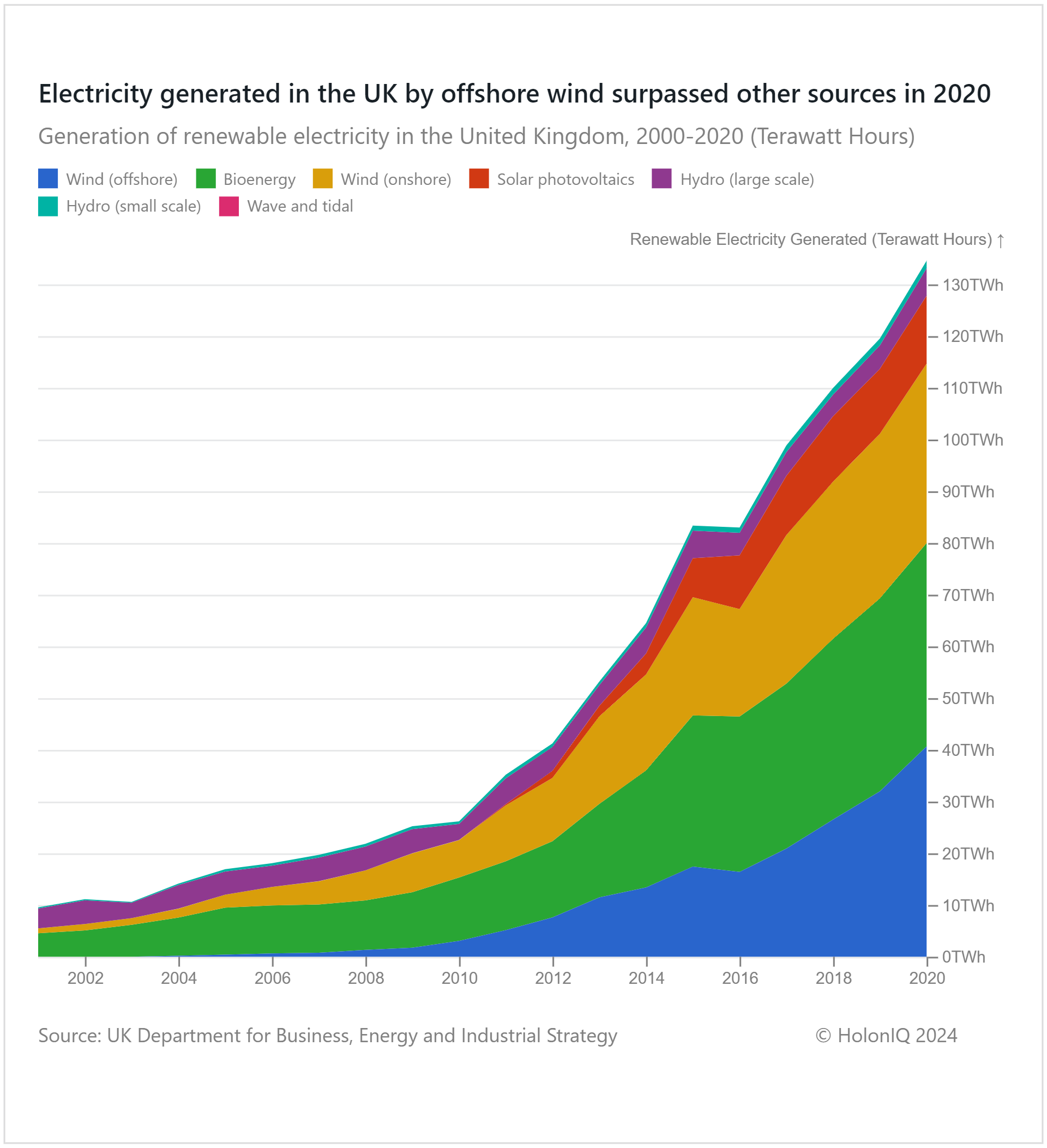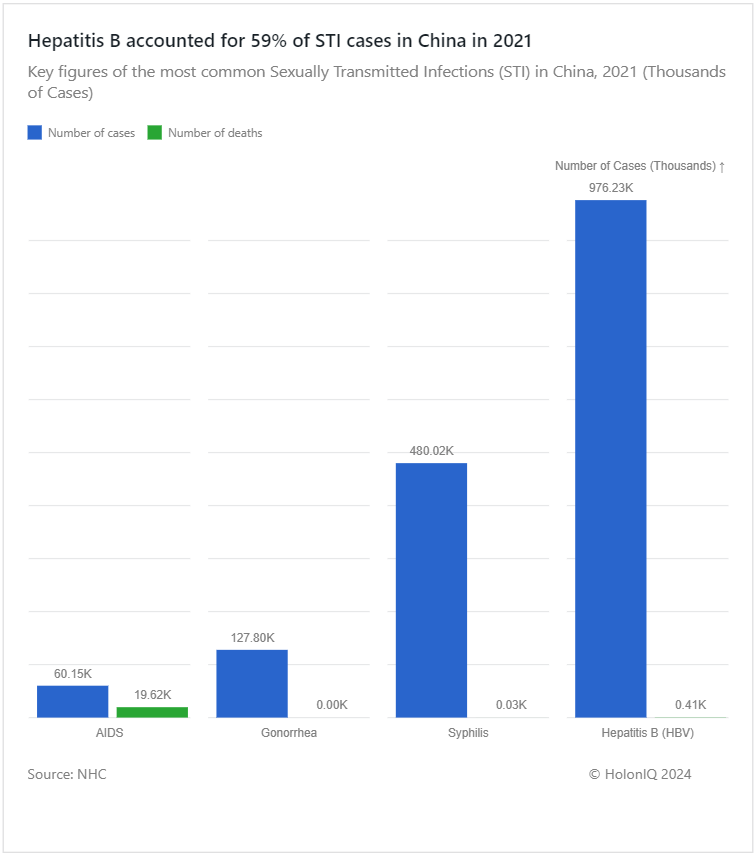🍃 2x Wind Energy. 30% International Students. 1M Hep-B Cases.
Chart of the Day #68 looks at International Student Populations, Wind Energy, and Hepatitis-B Infections.
A new survey in multiple European countries showed that people living with Hepatitis B and C fear stigma and discrimination, with some saying they were not treated well in healthcare settings. Canada's Immigration Minister has indicated the possibility of imposing further restrictions on international students as part of its efforts to address the ongoing housing crisis.
Today's Topics
🎓 International Students. Canada had the highest share of international students in 2022
🍃 Wind Energy. 2x rise in wind energy in the UK
🦠 Hepatitis B. Hep-B dominates China's STI cases
For unlimited access to over one million charts, request a demo.
🎓 Canada Had the Highest Share of International Students in 2022

Canada, Australia, and the United Kingdom have traditionally been the top choices for international students pursuing higher education. High-quality education, post-study work opportunities, and a high quality of life in these countries are attracting factors for students emigrating to these destinations. However, in response to the rise in international student numbers following the COVID-19 pandemic, these countries have introduced restrictions. Canada reduced study permit approvals by 35% starting in 2023. The proportion of rejected visa applications has increased in Australia, and the UK has announced a ban on overseas students bringing their families to the country.
🍃 2x Rise in Wind Energy in The UK

The United Kingdom has experienced a significant rise in wind energy usage from both onshore and offshore electricity generation since 2016, despite the global trend favoring solar energy due to its cost-effectiveness. Approximately one-third of the UK's electricity is generated from wind energy, propelled by several factors. The North Sea's strong winds in comparison to the UK's limited sunlight, make wind energy a more viable option than solar. Government support and policies have also incentivized the growth of wind and biomass energy, while hydropower has remained relatively stable throughout the years.
🦠 Hepatitis-B Dominates China's STI Cases

The WHO has forecasted that up to 10 million people in China could die from chronic hepatitis by 2030. As of 2021, nearly 980K hepatitis-B (HBV) cases were recorded in China. This is double the number of syphilis cases and over 7.5 times the number of gonorrhea cases. However, the prevalence of the hep-B virus infection declined to 3% between 2018 and 2022, reflecting progress in combating the disease. Rural areas and the eastern provinces continue to experience higher infection rates, and it is the most prevalent STI. The economic burden of HBV treatment, which can exceed 40% of annual household income, underscores the need for targeted prevention efforts.
China ranks fifth in HBV and C prevalence in the WHO Western Pacific Region, and disparities persist in those affected, with males and those aged 15-45 facing higher prevalence. Vaccination programs, such as the China-GAVI initiative, have yielded positive outcomes in reducing hepatitis B incidences, showcasing the effectiveness and need for proactive public health measures.
Like getting this newsletter? For unlimited access to over one million charts, request a demo.
Thank you for reading. Have a great week ahead!
Have some feedback or want to sponsor this newsletter? Let us know at hello@holoniq.com
